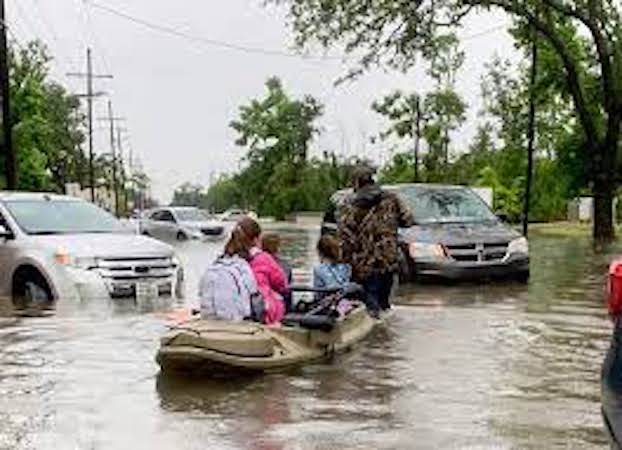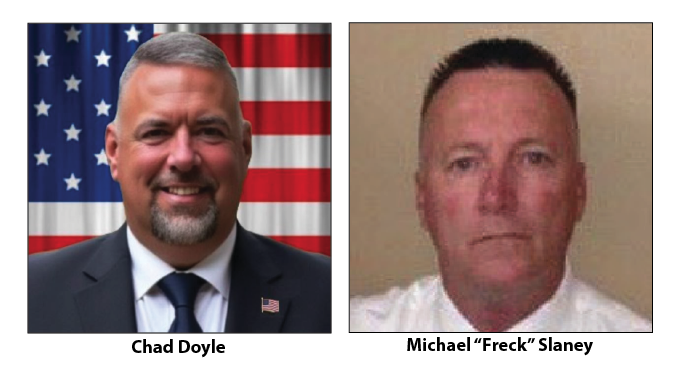Repetitive parish flooding targeted
Published 6:27 pm Friday, April 8, 2022

- Nick Delgado uses his boat to help a neighbor pick up their kids from schools during heavy rains in Lake Charles on May 17, 2021. (American Press Archives)
Calcasieu Parish police jurors heard updates Thursday on a study aimed at stopping repetitive flooding parishwide and making the parish more sustainable over the next 50 years against sea level rise and more intense rainfall.
Jeanne Hornsby, a professional engineer with the Lafayette-based C.H. Fenstermaker and Associates, told the Parishwide Drainage Committee about the latest progress on the Calcasieu Parish Regional Watershed Planning Project. She said computer models that map out the terrain of the watersheds simulate the impact of various storms and assess risk and solutions before certain projects and efforts are put in place. There are 10 major watersheds in Calcasieu Parish that all drain into various bodies of water.
“We’re starting to screen projects and starting to see what our next steps will be and which ones we will move forward,” she said.
Trending
Some of the planning project’s five steps are already done, including meetings to identify goals, data collection and modeling. Hornsby said creating models took up a large part of the effort. Decisions had to be made on which projects would work, as well as analyzing the current flood risk and the potential flood risk in 50 years.
Hornsby said modeling technology has greatly improved over the years, with the ability to tell full flood extents through a watershed. Progress on modeling the 12 watersheds is ongoing, with some complete and the rest scheduled to be done by the end of April, she said.
More than 600 projects were identified in a technical memorandum and are now being screened. The memorandum listed different strategies for flood mitigation.
“Projects could be anything from detention, flood gates, pump stations,” she said. “Non-structural projects are things like elevating and buying out houses, a maintenance program or changes to your policy. It takes all of these working together for flood mitigation.”
Hornsby said one of the parish’s biggest successes was to manage water based on watersheds instead of political boundaries. The parish has also reviewed and made improvements to existing drainage ordinances. She said the parish has also seen success in street-level improvement projects. More than 20 projects through FEMA are related to Hurricane Laura and include detention ponds and channel improvement.
Hornsby said more than 1,800 households parishwide are identified as repetitive losses, meaning they have at least one insurance claim for flooding. Allen Wainwright, parish public works director, said a local buyout program for repetitive loss should be pushed. The federal program requires a home to flood at least three times to receive assistance.
Trending
“We’re not winning that battle as we get major floods, so the list is growing,” he said. “The federal program is not nimble enough to go fast and knock out the problem quick enough.”
A webinar series is scheduled for 9:30 a.m. May 11 to give stakeholders, the public and professionals a deeper dive into the watershed planning project, Hornsby said. It will be available online for those wanting to watch it at a later time.
Wainwright said the goal for the rest of the year is to have discussions through the webinar series on which projects are the highest priority and pin down a starting point for certain ones. Some projects could be done in a couple of years, while others will be more challenging.
“Another set of pump stations on Kayouche Coulee is as hard as getting the Interstate 10 bridge replaced in the degree of difficulty,” he said. “But if you don’t start, you will never get it done.”
Wainwright said new initiatives with these projects should be ready to move forward when the Police Jury gets its budget for 2023.
“That means environmental impacts and those sorts of things that really get us to a point of design and maybe shovel ready,” he said.





